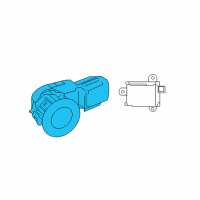Parking Sensors
Select vehicle to guarantee fit
- Department
- Brands
- Prices


Dorman® Replacement Rear Parking Sensor
PartNumber: 684-033$32.90Product Specifications- Connector Gender: Male
- Finish: Gray
- Mounting Hardware Included: No
- Package Contents: 1 Sensor
- Terminal Gender: Male
- Terminal Quantity: 3
- Terminal Type: Pin
- Universal Or Specific Fit: Specific
- UPC: 885484930292
- Wiring Harness Included: No
- Part Description: Replacement Rear Parking Sensor
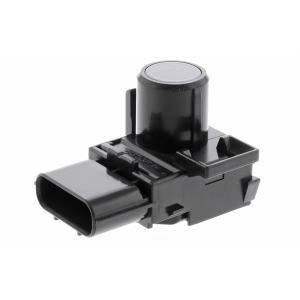

VEMO® Parking Aid Sensor
PartNumber: V26-72-0175$165.80Product Specifications- Fitting Position: Rear
- Weight: 0.024 kg
- X-Ref: 39680-TK8-A11YV
- Part Description: Parking Aid Sensor


VEMO® Front Parking Aid Sensor
PartNumber: V20-72-0013$92.18Product Specifications- Chemical Properties: Over-paintable
- Colour: Black
- Height [mm]: 27
- Housing Colour: Beige
- Length [mm]: 46
- Number of Connectors: 3
- Packaging Depth [cm]: 4,6
- Packaging height [cm]: 2,7
- Packaging Material: iSP - Foil
- Packaging width [cm]: 4,5
- Part number of recommended accessories: V99-72-0001
- Sensor Type: Ultrasonic Sensor
- Shape: angled
- Surface: Primed
- Weight [kg]: 0,029
- Width [mm]: 45
- Part Description: Front Parking Aid Sensor


Dorman® Replacement Rear Parking Sensor
PartNumber: 684-004$68.09Product Specifications- Connector Gender: Male
- Mounting Hardware Included: No
- Package Contents: 1 Sensor
- Terminal Gender: Male
- Terminal Quantity: 3
- Terminal Type: Pin
- Universal Or Specific Fit: Specific
- UPC: 885484447783
- Wiring Harness Included: No
- Part Description: Replacement Rear Parking Sensor
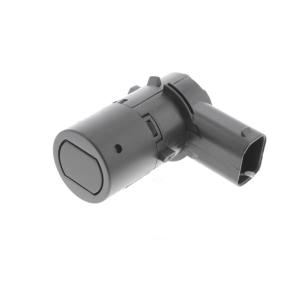

VEMO® Parking Aid Sensor
PartNumber: V38-72-0189$83.37Product Specifications- Article Description: Original VEMO Quality
- Chemical Properties: Paintable
- Color: Black
- Fitting Position: Rear
- Number of ports: 3
- Replaces this product: V38-72-0232
- Weight: 0.03 kg
- X-Ref: 25994-7S10A
- Part Description: Parking Aid Sensor
- $86.64 MSRP:
$121.87You Save: $35.23 (29%)Product Specifications- Other Names: Park Sensor, Sensor
- Item Dimensions: 9.4 x 6.6 x 3.5 inches
- Item Weight: 0.50 Pounds
- Fitment Type: Direct Replacement
- Part Description: Sensor Assembly, Parking


Dorman® Rear Parking Aid Sensor
PartNumber: 684-049$56.53Product Specifications- Connector Gender: Male
- Mounting Hardware Included: No
- OE Part Number: AA-8Z15K859-A
- Package Contents: 1 Parking Aid Sensor
- Terminal Gender: Male
- Terminal Quantity: 3
- Terminal Type: Pin
- Universal Or Specific Fit: Specific
- UPC: 885484583702
- Wiring Harness Included: No
- Part Description: Rear Parking Aid Sensor


VEMO® Parking Aid Sensor
PartNumber: V48-72-0014$83.06Product Specifications- Chemical Properties: Over-paintable
- Color: Black
- Engine Type: Petrol, Diesel
- Fitting Position: Rear, Front
- Height: 30 mm
- Housing Colour: Black
- Length: 63 mm
- Number of Poles: 3
- Packaging unit: 1
- Sensor Type: Ultrasonic Sensor
- Shape: straight
- Weight: 0.03 kg
- Width: 20 mm
- X-Ref: YDB500301PMA
- Part Description: Parking Aid Sensor


Dorman® Replacement Front Parking Sensor
PartNumber: 684-000$36.38Product Specifications- Connector Gender: Male
- Mounting Hardware Included: No
- Package Contents: 1 Sensor
- Terminal Gender: Male
- Terminal Quantity: 3
- Terminal Type: Pin
- Universal Or Specific Fit: Specific
- UPC: 885484447707
- Wiring Harness Included: No
- Part Description: Replacement Front Parking Sensor


VEMO® Rear Parking Aid Sensor
PartNumber: V20-72-0014$80.58Product Specifications- Chemical Properties: Over-paintable
- Colour: Black
- Height [mm]: 27
- Housing Colour: Beige
- Length [mm]: 62,5
- Number of Connectors: 3
- Packaging Depth [cm]: 6,8
- Packaging height [cm]: 2,7
- Packaging Material: iSP - Foil
- Packaging width [cm]: 3,05
- Plug Type ID: gerade
- Sensor Type: Ultrasonic Sensor
- Shape: straight
- Surface: Primed
- Weight [kg]: 0,029
- Width [mm]: 30,5
- Part Description: Rear Parking Aid Sensor
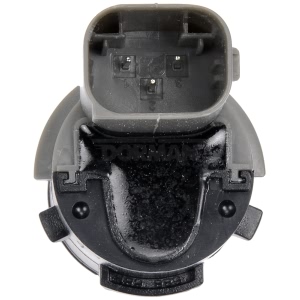

Dorman® Replacement Front Parking Sensor
PartNumber: 684-042$38.30Product Specifications- Connector Gender: Male
- Mounting Hardware Included: No
- OE Part Number: 66206989069, 66216911838, 66216938739
- Package Contents: 1 Sensor
- Terminal Gender: Male
- Terminal Quantity: 3
- Terminal Type: Pin
- Universal Or Specific Fit: Specific
- UPC: 885484931145
- Wiring Harness Included: No
- Part Description: Replacement Front Parking Sensor
OEM (Genuine) Reverse Sensor
PartNumber: 89341-0R060$230.35 MSRP:$334.65You Save: $104.30 (32%)Product Specifications- Other Names: Park Sensor, Reverse Sensor, Sensor
- Item Dimensions: 4.2 x 4.2 x 4.1 inches
- Item Weight: 0.80 Pounds
- Fitment Type: Direct Replacement
- Replaces: 89341-0C010, 89341-0C011
- Part Description: Reverse Sensor
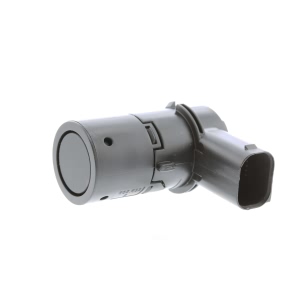

VEMO® Parking Aid Sensor
PartNumber: V48-72-0016$33.94Product Specifications- Article Description: Original VEMO Quality
- Chemical Properties: Paintable
- Color: Black
- Engine Type: Petrol, Diesel
- Fitting Position: Front, inner
- Sensor Type: Ultrasonic Sensor
- Weight: 0.03 kg
- X-Ref: YDB500311LML
- Part Description: Parking Aid Sensor


Dorman® Rear Parking Aid Sensor
PartNumber: 684-054$34.53Product Specifications- Connector Gender: Male
- Mounting Hardware Included: No
- OE Part Number: DA-8Z15K859-A
- Package Contents: 1 Parking Aid Sensor
- Terminal Gender: Male
- Terminal Quantity: 3
- Terminal Type: Pin
- Universal Or Specific Fit: Specific
- UPC: 885484583818
- Wiring Harness Included: No
- Part Description: Rear Parking Aid Sensor


VEMO® Parking Aid Sensor
PartNumber: V26-72-0177$60.63Product Specifications- Article Description: Original VEMO Quality
- Weight: 0.025 kg
- X-Ref: 39680-TL0-G01ZL
- Part Description: Parking Aid Sensor


Dorman® Replacement Rear Parking Sensor
PartNumber: 684-019$40.40Product Specifications- Connector Gender: Male
- Mounting Hardware Included: No
- Package Contents: 1 Sensor
- Terminal Gender: Male
- Terminal Quantity: 3
- Terminal Type: Pin
- Universal Or Specific Fit: Specific
- UPC: 885484448087
- Wiring Harness Included: No
- Part Description: Replacement Rear Parking Sensor


Dorman® Replacement Front Parking Sensor
PartNumber: 684-012$46.59Product Specifications- Connector Gender: Male
- Mounting Hardware Included: No
- Package Contents: 1 Sensor
- Terminal Gender: Male
- Terminal Quantity: 3
- Terminal Type: Pin
- Universal Or Specific Fit: Specific
- UPC: 885484447943
- Wiring Harness Included: No
- Part Description: Replacement Front Parking Sensor
- $148.24 MSRP:
$220.66You Save: $72.42 (33%)Product Specifications- Other Names: Park Sensor, Sensor
- Item Dimensions: 2.5 x 2.0 x 1.5 inches
- Item Weight: 0.50 Pounds
- Fitment Type: Direct Replacement
- Part Description: Sensor Pkg-Rear Parking Asst Alarm *Paint To Mat


Dorman® Rear Parking Assist Sensor
PartNumber: 684-051$49.43Product Specifications- Connector Gender: Male
- Mounting Hardware Included: No
- Package Contents: 1 Parking Aid Sensor
- Terminal Gender: Male
- Terminal Quantity: 3
- Terminal Type: Pin
- Universal Or Specific Fit: Specific
- UPC: 885484583764
- Wiring Harness Included: No
- Part Description: Rear Parking Assist Sensor


Dorman® Replacement Rear Parking Sensor
PartNumber: 684-006$38.83Product Specifications- Connector Gender: Male
- Mounting Hardware Included: No
- Package Contents: 1 Sensor
- Terminal Gender: Male
- Terminal Quantity: 3
- Terminal Type: Pin
- Universal Or Specific Fit: Specific
- UPC: 885484447820
- Wiring Harness Included: No
- Part Description: Replacement Rear Parking Sensor


Dorman® Replacement Rear Parking Sensor
PartNumber: 684-009$39.63Product Specifications- Connector Gender: Male
- Mounting Hardware Included: No
- Package Contents: 1 Sensor
- Terminal Gender: Male
- Terminal Quantity: 3
- Terminal Type: Blade
- Universal Or Specific Fit: Specific
- UPC: 885484447882
- Wiring Harness Included: No
- Part Description: Replacement Rear Parking Sensor
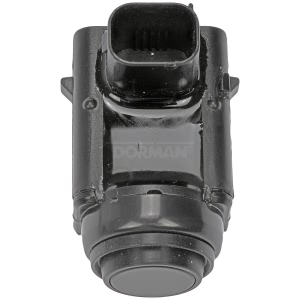

Dorman® Replacement Rear Parking Sensor
PartNumber: 684-013$31.77Product Specifications- Connector Gender: Male
- Mounting Hardware Included: No
- OE Part Number: 5HX08SZ0AB
- Package Contents: 1 Sensor
- Terminal Gender: Male
- Terminal Quantity: 3
- Terminal Type: Pin
- Universal Or Specific Fit: Specific
- UPC: 885484447967
- Wiring Harness Included: No
- Part Description: Replacement Rear Parking Sensor
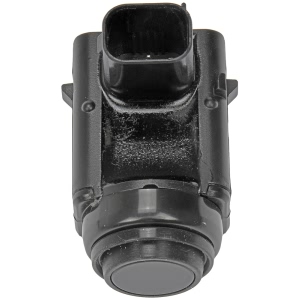

Dorman® Replacement Rear Parking Sensor
PartNumber: 684-020$31.77Product Specifications- Connector Gender: Male
- Mounting Hardware Included: No
- Package Contents: 1 Sensor
- Terminal Gender: Male
- Terminal Quantity: 3
- Terminal Type: Pin
- Universal Or Specific Fit: Specific
- UPC: 885484448100
- Wiring Harness Included: No
- Part Description: Replacement Rear Parking Sensor
- $53.89 MSRP:
$78.12You Save: $24.23 (32%)Product Specifications- Item Dimensions: 7.4 x 6.1 x 1.1 inches
- Item Weight: 0.40 Pounds
- Fitment Type: Direct Replacement
- Replaces: EM2Z-15K859-AA, EM2Z-15K859-AAPTM, FR3Z-15K859-AA
- Part Description: Automatic Park Sensor
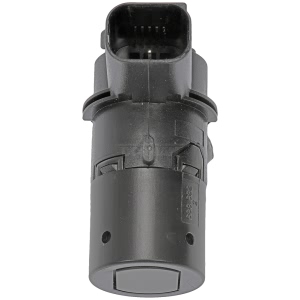

Dorman® Replacement Rear Parking Sensor
PartNumber: 684-025$37.99Product Specifications- Connector Gender: Male
- Mounting Hardware Included: No
- OE Part Number: 5G1Z-15K859-AAA
- Package Contents: 1 Sensor
- Terminal Gender: Male
- Terminal Quantity: 3
- Terminal Type: Pin
- Universal Or Specific Fit: Specific
- UPC: 885484448209
- Wiring Harness Included: No
- Part Description: Replacement Rear Parking Sensor


Dorman® Replacement Front Parking Sensor
PartNumber: 684-027$34.62Product Specifications- Connector Gender: Male
- Mounting Hardware Included: No
- Package Contents: 1 Sensor
- Terminal Gender: Male
- Terminal Quantity: 3
- Terminal Type: Pin
- Universal Or Specific Fit: Specific
- UPC: 885484847217
- Wiring Harness Included: No
- Part Description: Replacement Front Parking Sensor
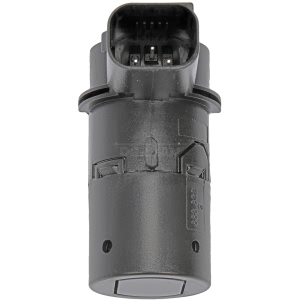

Dorman® Replacement Rear Parking Sensor
PartNumber: 684-029$31.31Product Specifications- Connector Gender: Male
- Mounting Hardware Included: No
- Package Contents: 1 Sensor
- Terminal Gender: Male
- Terminal Quantity: 3
- Terminal Type: Pin
- Universal Or Specific Fit: Specific
- UPC: 885484847255
- Wiring Harness Included: No
- Part Description: Replacement Rear Parking Sensor
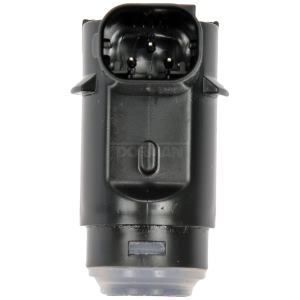

Dorman® Rear Parking Aid Sensor
PartNumber: 684-063$34.99Product Specifications- Connector Gender: Female
- Mounting Hardware Included: No
- OE Part Number: 9L3Z-15K859-C, 9L3Z-15K859-D
- Package Contents: 1 Parking Aid Sensor
- Terminal Gender: Male
- Terminal Quantity: 1
- Terminal Type: Blade
- Universal Or Specific Fit: Specific
- UPC: 885484581067
- Wiring Harness Included: No
- Part Description: Rear Parking Aid Sensor
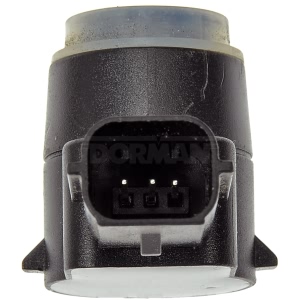

Dorman® Parking Assist Sensor
PartNumber: 684-061$33.56Product Specifications- Connector Gender: Male
- Mounting Hardware Included: No
- Package Contents: 1 Parking Aid Sensor
- Terminal Gender: Male
- Terminal Quantity: 3
- Terminal Type: Pin
- Universal Or Specific Fit: Specific
- UPC: 885484584013
- Wiring Harness Included: No
- Part Description: Parking Assist Sensor
- $86.64 MSRP:
$121.87You Save: $35.23 (29%)Product Specifications- Other Names: Park Sensor, Sensor
- Item Dimensions: 2.0 x 1.8 x 1.2 inches
- Item Weight: 0.40 Pounds
- Fitment Type: Direct Replacement
- Part Description: Sensor Assembly, Parking (Bumper Dark Gray)
About Parking Sensors
Parking assist sensors help the driver station the vehicle more safely and provide warning signals when an object is close to the car. Most modern vehicles have a front and rear parking sensor to detect what is around the vehicle.
Ultrasonic systemsThe ultrasonic system features closeness detectors to measure the range of objects that are nearby. The sensors give out pulses, with a control unit that measures the return interval and calculates object distances. Some systems include a visual aid, such as LED or LCD with a display of the object's distance.
Also, the rear sensor can be activated when the vehicle is put in reverse and is deactivated when the user switches the gear. The ultrasonic system relies on the reflection of sound waves, but the system may not detect objects that aren't big enough.
Electromagnetic systemsThe electromagnetic parking sensor (EPS) was renovated in 1992, and the sensor relies on the vehicle moving slowly to avoid the object. And when moving toward an object the alarm signal gets louder, meaning that the vehicle is getting too close. The parking sensor is typically mounted in the inner part of the bumper to preserve the factory look of the vehicle.
Common issues with a faulty parking sensorThe parking sensor can become faulty over time and the harnesses can wear out.


